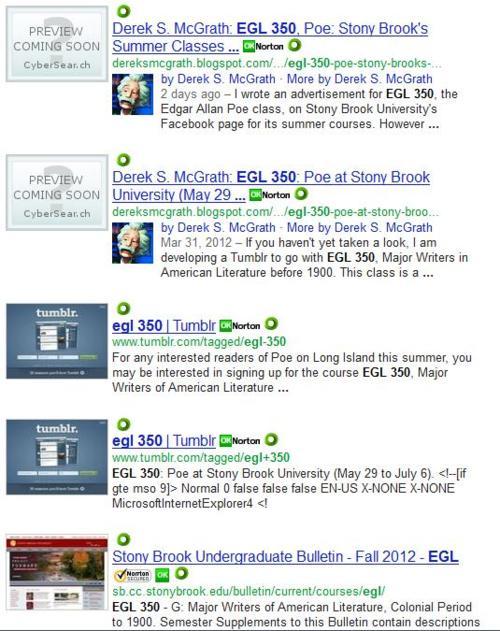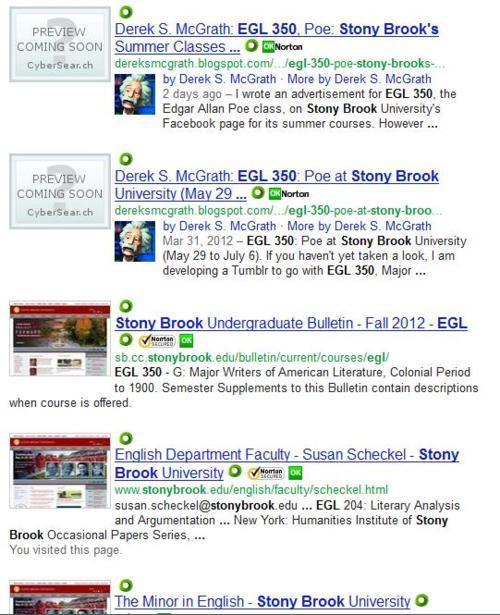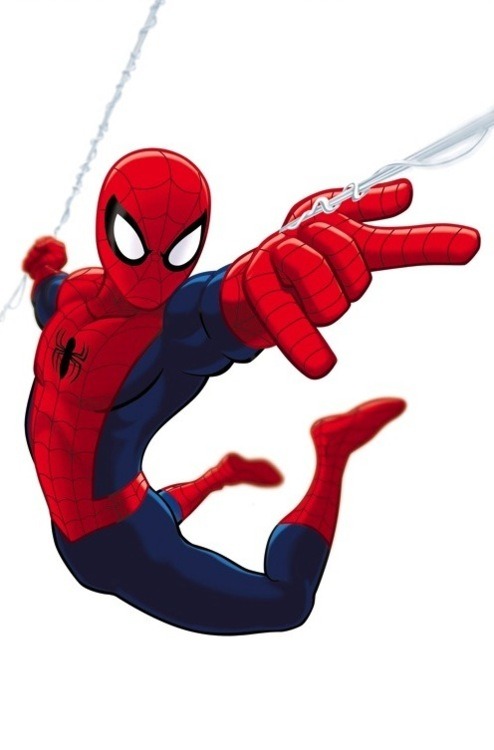Ultimate Spider-man: Season 1
Episode 1: "Great Power"
Episode 2: "Great Responsibility"
It’s spring break where I teach, and I finally watched Disney XD’s newest iteration of the animated Spider-man, Ultimate Spider-man. To
simplify discussion, I’m going to minimize how often I compare the
series to other adaptations of the web slinger, but I welcome feedback
on how Spidey comes off differently from the comics, films, games, and
other television shows.
Long-story short version: The show is a mixed bag for me. While
I love the cartoonish style and think the series has potential for
developing Peter Parker, I think the show has set up the character to be
a wholly different kind of unlikeable from his film adaptations—rather
than moody, emo, and poorly acted, here Spider-man benefits from a great
performance but a characterization that, while making him flawed and
potentially relatable, robs him of that super quality that you expect
in, well, a superhero.
To steal
Masako X’s system for reviewing recent series: I vote
CONTINUE. I want to see what Paul Dini, Man of Action, and the rest of the team behind
Ultimate Spider-man can accomplish to make Peter into the kind of hero we all know he can be. Stop focusing on how cartoonish the show is, and just laugh at the comedy and wait for the really spectacular stuff to happen. Grade: B-
And now onto the extended discussion:
Ultimate Spider-man
is an animated series named for the alternative universe line of Marvel
Comics (which surprisingly features Miles Morales whereas this animated
series has Peter Parker). The series has emerged
after a long conflict between Marvel Comics (publisher of Spider-man and
owned by Disney) and Sony Pictures (who hold the film rights and up to
now the television adaptation rights of Spider-man). In the midst of this fight was The Spectacular Spider-man, produced by Sony, aired by the WB and then CW Network, and ultimately ending its run on Disney XD. Written by Gargoyles creator Greg Weisman, Spectacular sought
to condense decades of Spider-man lore into a contemporary series that
not only gave an adaptation of Peter Parker’s high school years, rarely
covered outside of the comic books, picking the best parts of his long
run across a wide variety of media. Weisman and his team
updated the show not only for ethnic diversity but bringing in more
recent visual and narrative elements taken from the Ultimate comic book
line and the films, and for bringing in later characters such as Mary
Jane Watson and Venom alongside earlier characters such as Harry Osborn
and Gwen Stacey. But the show was cancelled due to Disney’s eventual legal reacquisition of television rights to Spider-man but not to Spectacular itself, which remains co-property with Sony.
Plus,
to be honest, Weisman is a great writer, but his sense of humor differs
from my own—I would like to think we both enjoy camp and, as literary
scholars, a good amount of wordplay, but something about his shows after
Gargoyles do not do it for me as easily. As
well, Weisman’s intense focus on dense continuity and foreshadowing
makes it difficult to jump into the series in comparison to other
continuity-heavy shows such as the 2003 adaptation of Teenage Mutant Ninja Turtles or Avatar: The Last Airbender. Maybe
those shows appeal to younger audiences and seem more fun—but in any
case, I was excited to see this series unfold, and how it would use a
more cartoonish style to present another story of the life of Peter
Parker.
In reviews I read before watching the actual episodes, complaints centered on the Scott Pilgrim vibe. As
a huge fan of both the graphic novel series and the film (*cough* and
writing an article on both in relation to gender and audience reactions
that I hope to get published soon *cough*), the stylistic choices did
not bother me. Granted, the chibis give off a Teen Titans vibe—apt, as both it and Ultimate share an animation director, Alex Soto. While
the exaggerated mini-characters took a long time to accept with Robin,
Starfire, and their peers, I slowly recognized their value to portraying
DC Comics’ teenage superheroes, and now how this same style will
portray Marvel Comics’ teenage superheroes: the stylistic design of Spider-man and friends presents
a broader, easier to follow sense of the characters’ emotions, albeit
knocking viewers over the head, yet without coming off as Looney Tunes
levels of unbelievability. As well, the sound effects and slow-motion, while indicative of Scott Pilgrim especially in the film adaptation, is also held in common with Batman: The Brave and the Bold, I think making for a strong incorporation of these static comic book panels into the overall largely animated series.
And this animation quality is due in large part to the great work at Film Roman: its staff turns in appealing character designs and exciting animation. Trapster’s “oh crap” look at the beginning of Episode #1 got a good laugh. I see much of Man of Action’s influence (thanks to Soto, their colleague on the former) carried over from the original Ben 10 and Generator Rex, and I’m pleased to have 2-D series rather than the leap (again after the MTV iteration) to CGI animation. Yes,
the series is cartoonish, even in its sound effects—in Iron Man’s
training sequence, the cat/crash sound effect was grating not because of
noise but because the joke is so cliché. Still, I like my comic books to bring in that good dose of camp as reflected in both the visual and the sound of Ultimate. For
example, I laughed much harder at the record scratch when Fury
discloses Spidey’s identity, or the lunch lady’s wink, the car alarm to
deactivate SHIELD defenses, or Peter’s awesome parachute drop scream
(courtesy of Drake Bell), because with each moment, the change in music
and sound so differed from the action and the conversation, making the
transition in tone much easier to accept. That, and the sound effects make me nostalgic for Megas XLR. As
well, the “clang” when Fury knocks out Trapster was excellent in
loudness and realism while still having some cartoonishness to it.
The problem is when the cartoonishness gets in the way of realism. A food fight defeats the Frightful Four…er, Terrible Trio…whatever. Really? Mary Jane takes down Thundra with gelatin dessert—what the hell? As
a distraction, Parker’s plan is effective but a risky gamble that,
while showing his inexperience, diminishes how sympathetic I can be
towards this character. Overall, concerning this
cartoonish artistic style, as long as the visual and auditory tone is
not out-of-sync with character development and plot—which unfortunately
fails in transition from the attack on Harry to Peter’s joy in trapping
Flash in the locker, or playing up for laughs the dark foreshadowing of
Curt Connor’s missing hand, or even joking about him losing his hand—I
could see these cartoonish elements used as effectively as, when pointed
out by another reviewer, Inner Sakura from Naruto.
Furthermore, where the Scott Pilgrim comparison leads to an awkward tone for the show concerns the portrayal of Peter Parker himself. And my complaint has nothing to do with Drake Bell, who so far presents Spider-man as well as Josh Keaton in Spectacular
and much better than Neil Patrick Harris’s performance in the
MTV/Mainframe series (and given the Dr. Horrible avatar for my blog Comic Book Masculinity, I say that comment as a huge NPH fan—and because Harris captured the character’s voice much better in the video game Shattered Dimensions). Rather, my concern with Parker is that he sounds…well, slacker. “Lonely loser”? Nonsense—I
want my Spider-man to be a character who while flawed still retains
qualities that makes him better than me, that makes me admire him. But he hasn’t washed his suit in a week? Okay,
this moment is typical for high schoolers (…and still many of us
20-somethings…shame, I know), but the joke is so long-winded as to lose
its humor. He needs SHIELD to give him a better web-slinger? While
I do not question how Fury’s team could reverse-engineer and then
improve upon the device, their success diminishes Peter’s own. He is still a young character, and I do not want him to be a Gary Stu.
And Peter is not the only character to suffer from this…is Flanderization the right word after only two episodes? Supporting characters are simplified but without improving upon their core personalities. Aunt
May is cliché as the busybody single parent, although her nightly
schedule provides a more realistic explanation for how Peter avoids
having his secret identity discovered. And yes, I do miss the Machiavellian portrayal of Spectacular Norman Osborn, and the portrayal of him in Ultimate as a moustache-twirling supervillain hardly works as well as, say, how Weisman portrayed him or Tombstone. Although, Norman’s interest in, well, hiring Spider-man does offer some interesting comparisons between his portrayal here and Spectacular Tombstone. But
here Norman’s work seems too coincidental—his first meeting with
Parker, and his monologuing about turning Spider-man into an
industrial-military commodity. At least this version has
something different from previous adaptations by presenting Osborn’s
concern for his son’s well-being—although whether stopping the
destruction of Midtown High was out of love or merely paternalistic
possessive remains to be seen. I hope the team behind Ultimate can do something with Osborn that balances his concern as a father with his villainy as a corporate lord.
As well, de-aging the characters leaves me ambivalent. I
do not know whether I felt this way as a kid, but I cannot stand how
animated shows try to be relatable to targeted demographics through the
inclusions of children and teenaged characters. I liked Darkwing Duck more than Gosalyn. Heck, even Yakko, Wakko, and Dot in
Animaniacs
are technically old characters, and had the streetwise, aged attitude
that was appealing without needing to make them children; rather, their
youthfulness enhanced their sarcasm and wit. But here with
Ultimate, I do not care about seeing Marvel characters as kids. I’m reminded of
Patton Oswalt’s rant concerning the Star Wars prequels: sometimes you do not need to see how some characters grew into their adulthood, because the stories are not that interesting. Yes,
de-aging Luke Cage, Iron Fist, White Tiger, and Nova presents them to
audiences that may otherwise have never seen them before, but I think
the series could have been enriched by shining the spotlight
alternatively on the big names in Marvel Comics—Captain America, Iron
Man, and Wolverine—and the second- and third-stringers. In
fact, if you want a kids’ team, rather than de-aging characters, why
not pick some of the more eclectic elements of this comic book world? Why not Araña? And I would love to see Dan Slott write a Squirrel Girl episode! Plus, the fact that these capable young superheroes are lessened in importance because Spider-man has a bit more experience? Because somehow he now can take out the Foursome while his new underlings do damage control? It’s one thing to make Spidey into a sixth ranger; it’s another thing to make him a leader from the beginning. As well, unlike what Weisman has done with
Young Justice, I doubt we will hear anyone rip Batm—er, Fury a new one for endangering minors.
But turning back to the star of this series, I cannot stand our hero as a slacker! This guy is Peter Parker, one of the biggest nerds and fanboys in the Marvel Universe. I
like Peter sounding—and yes, as he is doing in this series—like an
overly eager character and without the moodiness given in the film
adaptations. But his immature flaws must be tempered with successes and intelligence that make him stand out in spite of his age. Concerning the character development of Peter, I think Weisman’s work in Spectacular outshines what Ultimate is doing in giving us an earnest, albeit geeky character with the stuff to become one of the greatest, most relatable heroes. At least in these first two episodes of Ultimate, the emotional drive is there, but something is missing in Peter’s fortitude and intelligence. I guess I want something less like The Batman and more like Paul Dini’s work on Batman: The Animated Series. But I wait to see what great improvements Dini and his colleagues can bring to their portrayal of Parker. At least their version is more quippy than any other animated version of the character, and I appreciate that trait.
I would like to conclude by referring back to the Great Lakes Avengers
mini-series from a few years ago, which argued that comic books have
become so dark today and lack the fun that they used to have. With
Nolan’s spin on Batman, the darkness is all-encompassing and robs the
superhero story of its innate silliness—of a man who dresses as a bat,
of characters gaining superpowers through science fiction mumbo jumbo,
and inanity of a Bat-Mite or an Impossible Man. I want superhero stories with the kind of comedy and pathos offered in films such as Thor and Captain America. And
while the visuals and the sounds may be grating, I hear and see them as
throwbacks to the earlier Saturday morning portrayals of the web
slinger, like in Amazing Friends. As well this
show is willing to recognize the inherent silliness that sometimes
dominates comic books, such as Parker’s quick dismissal of Thundra and
the entire parallel universe origin story—“Don’t ask.” With all due respect to Weisman’s sense of humor in Spectacular, Spider-man has been long overdue for some off-the-wall levity in the spirit of Batman: The Brave and the Bold. Yes,
Weisman wrote for that series as well, but his humor seemed forced when
the Joker is giving audio commentary on his own car race. Rather, I mean the kind of tone that The Brave and the Bold strikes by adding to this insane setting some no-nonsense characters who ground the action and keep other characters sympathetic. I
love what that series did to make me feel the pain of Bruce Wayne,
B’wana Beast, and even Ambush Bug, even as I laughed at their earlier
comedic moments. I only hope that Ultimate Spider-man strikes that same balance of seriousness and levity.
Other random thoughts:
- The poor horsey!
- Where is the dynamic opening sequence? Where is the kicking theme song?!
- “Too big, too clunky.” Fury extends hand. “I didn’t say ‘no.’”
- Great work by of all people Steven Weber and Tom Kenny, proving what Joss Whedon and the creators of The Legend of Korra have said: comedic actors know how to turn in some of the best dramatic performances.
- Making Nick Fury hilarious—as ventriloquist Uncle Sam, and crying over Spidey after he dies ten minutes working at SHIELD. Although I doubt this kind of humor would carry over in tone well in Whedon’s upcoming adaptation.
- Does Jameson look like he is reading teleprompter? Eh, if he ever becomes mayor of New York, I’m sure Fox News has a complaint already lined up.
- Mary Jane…meh. Tara
Strong’s voice doesn’t add uniqueness to the character, and while I’m
happy to see a spin on her character now as a journalism student,
Parker’s shut-down of any potential relationship is surprising. Still, I do not mind an adaptation that changes the story a little—otherwise I would just read the original comics.
- Huh—was hoping to hear Ron Perlman again as Wizard. Bummer. Tom Kenny still does well in the role.
- …In the first episode, was Parker disappointed that the student he caught was a guy and not a woman?
- “I’m off to see the Wizard.” Meh—corny.
- “Immature, I know—but it felt so good!” Great way to adapt to Stan the Man’s advice, Spidey.
- I guess the best way to get the attention of SHIELD is to land on its helli-carrier…and then avoid getting shot. Fury could have at least left an email address. Or are you supposed to Tweet him @Fury_SHIELD?
- …What’s wrong with the name “Spider-man,” White Tiger? What would be better? “Arachnid Boy”?
- Did the second episode mock the upside-down kiss scene from Raimi’s first film adaptation? Love how Spidey tries to invoke Christian Bale’s gravelly voice—funnier than Ryan Reynolds in Green Lantern. “D’oh!” indeed.
- Was the SHIELD Iron Spider-esque suit a joke because Peter already can climb walls, or because it seems rather Doc Ock-esque?
- “But I’m so cuddly! Meow!”
- Glad I’m not the only one mocking the Spider-Cycle. Thanks for speaking for us comic book nerds, Peter!
- “Scared whipless”? What the shell? Too many puns!
- “It’s New York—who needs a car?” Damn right! Although service on Long Island Railroad could be faster.
- Nova-creep is the worst dental surgery anesthetic ever. Nine out of ten dentists do NOT recommend.
- Does Midtown High look rather sprawling for a NYC high school? What kind of property value does that land have? I
don’t know—looking at the size of some high schools and community
colleges in New York City, I thought more attention is given to height
than width?


